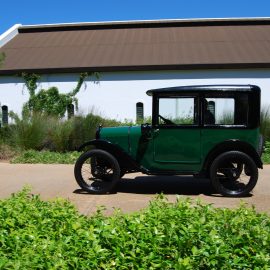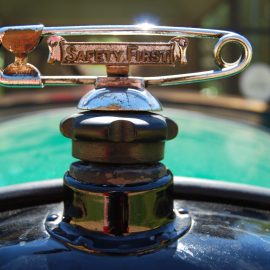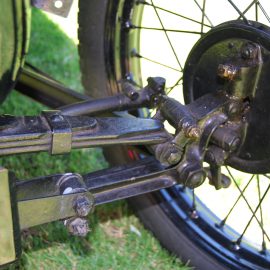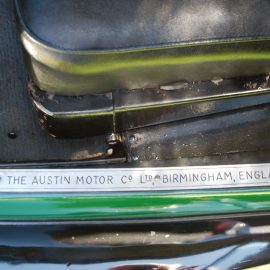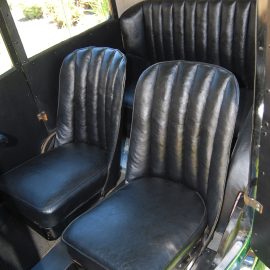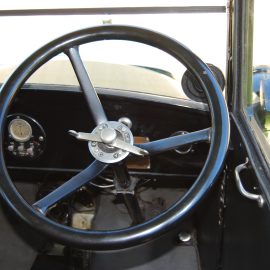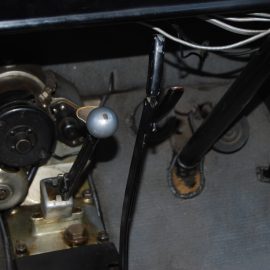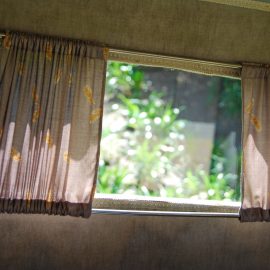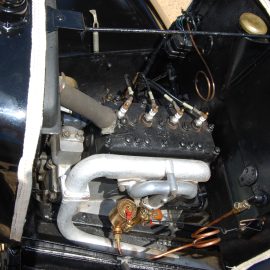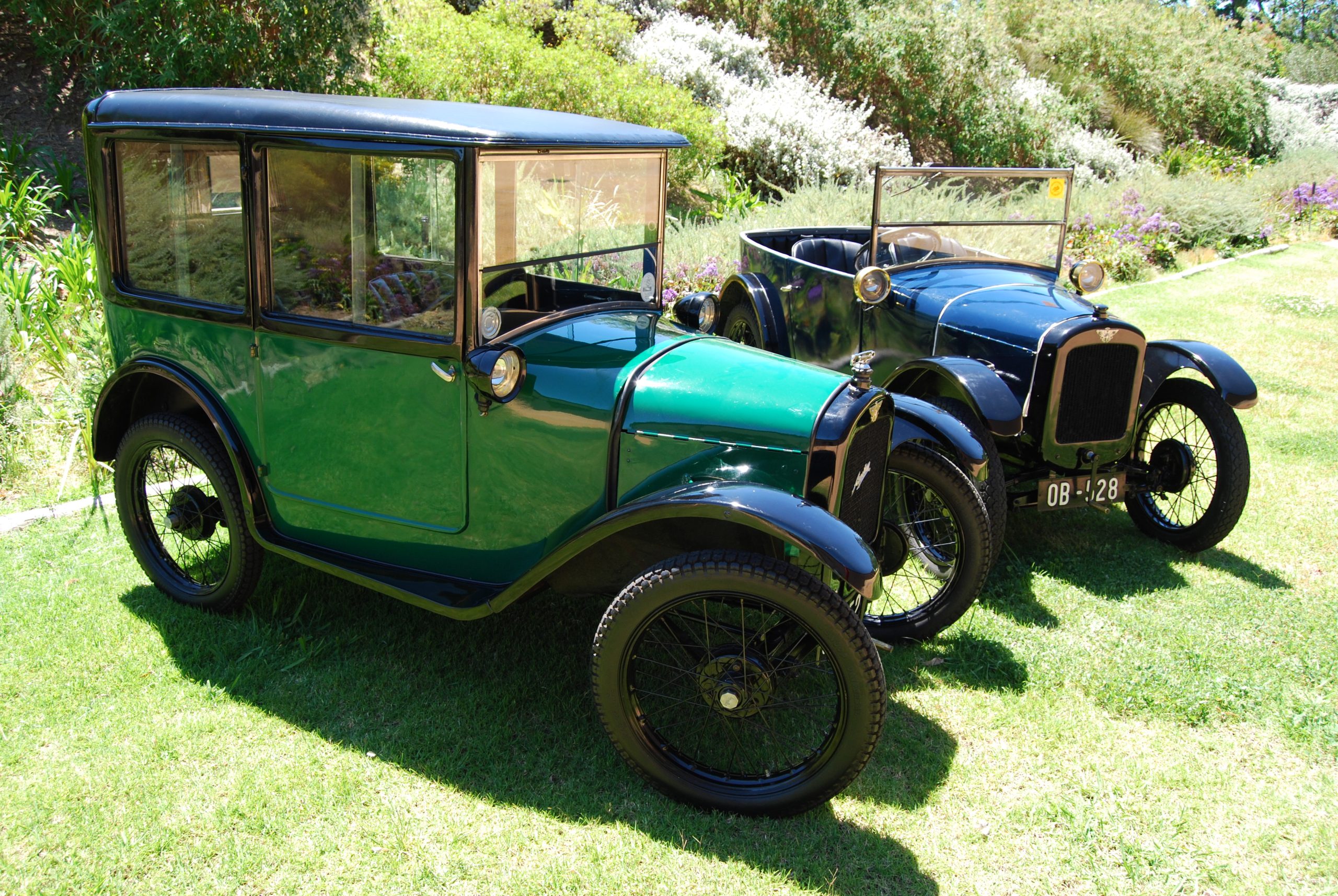
01 Aug Anniversary Celebration: 1926 Austin 7 Top Hat
A regular feature covering vehicles in the FMM collection that are celebrating an anniversary during 2022. This month we don a top hat and celebrate one of Britain’s most cherished centenarians….
Necessity is the mother of invention. Before WWI the Austin Motor Company had produced a range of cars, but Herbert Austin had been influenced by the manufacturing philosophy of Henry Ford and decided to follow the American’s lead by also mass producing a single model, the 20. Austin’s Longbridge factory had been enlarged to help Britain’s war effort, and it was here that Herbert’s plan was put into effect. However, the Austin 20 proved to be too large for the home market and the one-model policy was soon dropped. But the damage had already been done – the company was struggling and in receivership. So, spurred on by the post-war depression and the new Horsepower Tax, in 1920 Herbert decided to work on a new small car to meet the growing needs of a population wanting affordable transport. But it was not plain sailing…
Despite the company being in dire financial straits, the board of directors and numerous creditors opposed the idea so, to his eternal credit, Herbert – who was a talented engineer – decided to go it alone and develop the concept at his own expense. He hired 18-year-old-draughtsman Stanley Edge from the Austin factory and set up a design office in the billiard room (NOT on the table, though…) of his house in Lickey Grange. Edge lived in a lodge on the 40-hectare Grange estate and ate in the library. So working from home is nothing new.
The chassis was simply a steel, channel section A-frame with minor cross bracing and the engine mounted between the channel sections at the narrow front end. It has been said that the layout was influenced by the design of an American truck used in the Longbridge factory. Initially, the wheelbase was 6’3” (191 cm) and front and rear tracks 3’4” (102 cm). Around 1933 the 8’10” (269 cm) chassis was increased by six inches (152 mm) with a corresponding increase in the rear track. The forged front beam axle was located and suspended on a transverse half-elliptic leaf spring and splayed radius arms, while the spiral-bevel rear axle was supported on quarter-elliptic springs cantilevered from the back of the chassis. Early cars did not have any shock absorbers. Drum brakes were fitted on all wheels – a notable feature for the period and especially given the basic nature of the car – the fronts operated by the handbrake. These became fully coupled in 1930. Worm-and-sector steering was employed.
Edge convinced Austin to use a small four-cylinder engine and the original side-valve design had a capacity of 696cc that equated to an RAC rating of 7,2 hp but by the time the car went into mass production, the capacity was increased to 747cc and the rating became 10,5 hp. Peak power arrived at a ridiculously low 2 400 r/min. The cast iron cylinder block and detachable head were mounted on an aluminium crankcase. The crankshaft used two roller bearings and was splash lubricated: a centre bearing was added in 1936. Cooling was by thermosiphon without a water pump. The early cars used magneto ignition but this was changed to coil in 1928. An electric starter – another surprising feature for the time – was fitted from late 1923.
Edge also carried out the design of other mechanical components such as the three-speed gearbox and clutch assembly – an extra forward ratio was added in 1932, synchromesh provided on third and top a year later, then on second in 1934. Austin was largely responsible for styling the Seven, which was reportedly influenced by the Peugeot Quadrilette.
The design was completed in 1922 and three prototypes were built at Longbridge. The Austin Seven (named after its nominal hp rating) was announced to the public in July 1922 and went on general sale in March 1923 with a price tag of £165. Austin had put a large amount of his own money into the design and patented many of its innovations in his own name, and in return for his investment he was paid a royalty of two guineas (£2.2s) on every car sold. Nearly 2 500 cars were made in the first year of production and within a few years the Baby Austin – as it was to be affectionately known – had wiped out the cyclecar industry and transformed the fortunes of the Austin Motor Company.
So what is so special about the Seven? From my 1,9-metre perspective, it is a very small car. FMM has a few 7s in the collection, including two 1926 models – an open-tourer that is referred to as a Chummy and a Top Hat saloon. Both start easily with a press on the floor-mounted starter. The clutch is very stiff with practically no free play – it is almost like depressing a button. First gear enthusiastically builds up momentum before double-declutching into second, which proved to be an amazingly flexible gear. The lever moves around a tight, exposed aluminium gate and my hand brushes the handbrake but this is vintage motoring – 90 years ago ergonomics was not an issue. But my left leg ached for a few days afterwards…
Top gear of the three-speeder is a bit of an overdrive and the car was claimed to have a top speed of 45 mph (72 km/h), but I reckon that would take a l-o-n-g time to reach without the help of wind or gradient. Brakes naturally need careful consideration, the drums looking almost impossibly small behind the wire-spoked 19-inch wheels shod with 3.25-width tyres. But the overall experience is FUN. Sure, the body wriggles around but the ride quality was amazingly smooth and the steering is light and quite direct. What really impressed was the fixed, body-hugging seat – oh that some modern perches could provide such support. Sitting shoulder-to-shoulder with my front-seat passenger, the drive was grin-inducing from start to finish. The generously-sized front and rear glazing affords a tremendous view.
By 1939 when production finally ended, around 300 000 cars and vans – carrying such charming names as Chummy, Nippy and Ruby – had been made and it had become the world’s leading small car. And what should not be overlooked is that Herbert Austin’s bold go-it-alone initiative all those years ago spawned some significant spin-offs: the car was built in Germany as a BMW Dixi, in the USA as a Bantam, in France as a Rosengart and in Japan as a Datsun. Swallow, later to become Jaguar, and Gordon England were just two vehicle body builders who established themselves courtesy of the Seven’s chassis, which also formed the basis for all manner of successful sports cars. The engine was practically indestructible despite its almost crude construction, and even withstood supercharging. When the engine became obsolete at Longbridge, Reliant continued with it for its three-wheelers.
Without doubt, the Austin Seven helped motorise a nation and little wonder that in1999 it was a short-list candidate for the Car of the Century title. Simple, robust, affordable – it was Herbert Austin’s counter to Henry Ford’s Model T and while it may not have ultimately been quite as successful, it nevertheless ranks as a landmark design in motoring history.
FMM’s 1926 Austin 7 Top Hat is currently on view in Hall C.




